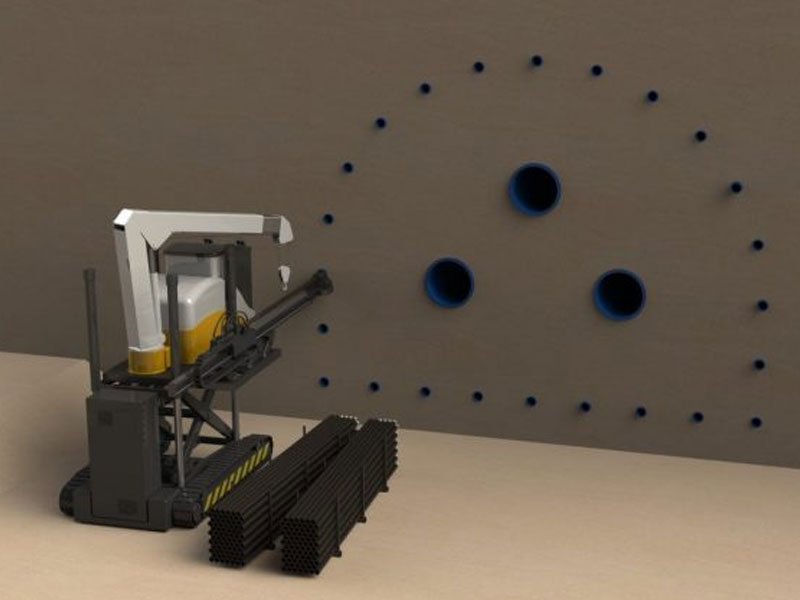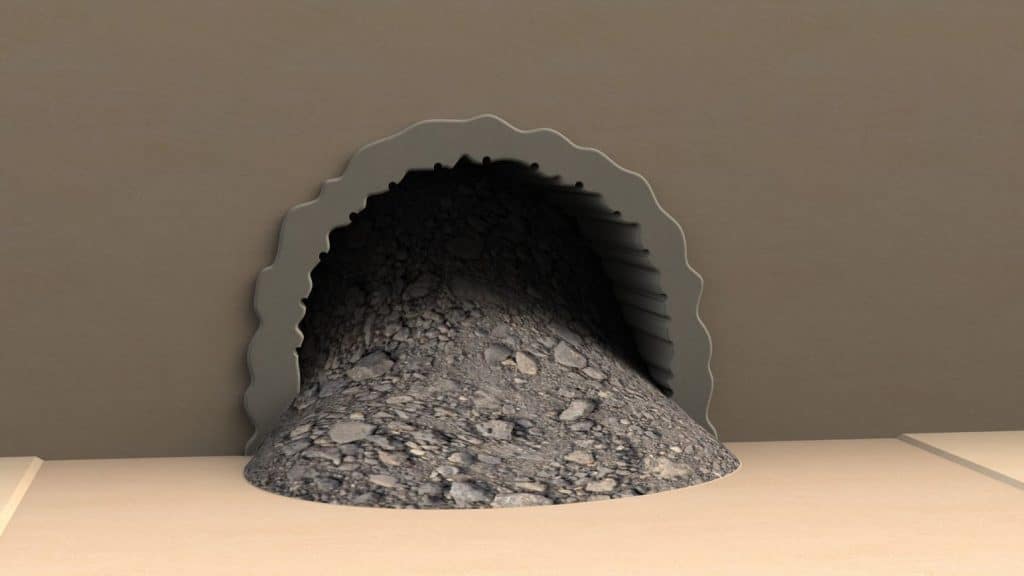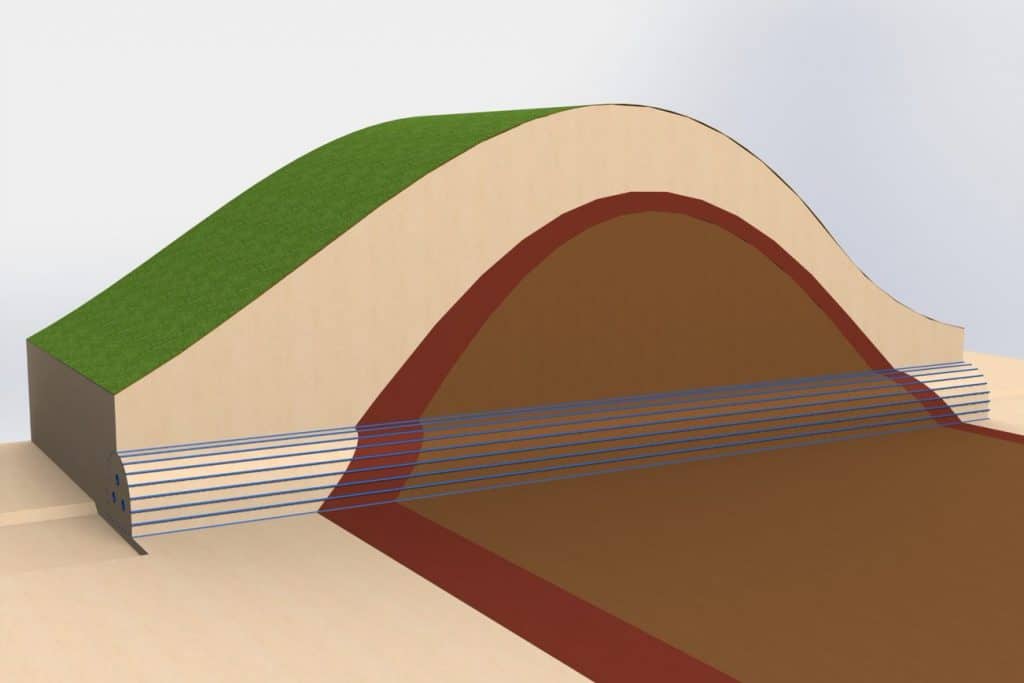Digital twins on the manufacturing menu – with help from the hyperscalers
SOURCE: HTTPS://WWW.IOTTECHNEWS.COM/
NOV 16, 2023
hyperTunnel Develops New Way to Build, Repair, Enlarge and Monitor Tunnels
SOURCE: TUNNELINGONLINE.COM
DEC 22, 2021

The approach to building tunnels has barely changed in 130 years. Though the machines deployed for surveying, boring, constructing and excavating tunnels have evolved and improved, tunneling methods remain fundamentally the same as they were in Victorian times. Complexity, cost and project risk have remained stubbornly high. In this emerging era of digital transformation and technology transfer, hyperTunnel is proposing a revolution.
hyperTunnel has devised a new smart, scalable system for the construction, repair, enlargement and maintenance of tunnels and underground structures. Fit for the 21st century, the hyperTunnel method combines proven construction techniques from other industries with innovative digital technologies.
“We’ve brought together extraordinary technology breakthroughs from a wide range of industries and integrated them with proven methods to create a radical new method. This approach is enabling us to rethink how new underground space is planned, designed, financed, constructed, operated, and maintained,” says Steve Jordan, co-CEO, hyperTunnel.
The hyperTunnel tunnel-building method at-a-glance
Whereas the conventional method is to dig a hole then build the tunnel, hyperTunnel first builds the tunnel, then digs the hole.
A significant break from convention is that the hyperTunnel does not create the hole by pushing through the ground with a cylindrical boring machine. Instead, it 3D-prints the tunnel inside the ground, working to a digital twin created using completely new levels of data generated by hyperTunnel’s digital ground surveying techniques.
Using horizontal directional drilling (HDD) a series of bore pipes are drilled in the geology to form the outline of the tunnel. With precision accuracy, a number of semi-autonomous robots move throughout the inside of the bores to create the structural shell of the tunnel using swarming techniques. After the geology within the shell is disrupted, spoil is removed with a remote-controlled excavator. A continuous concrete layer can then be sprayed onto the shell and the construction completed, if required, with custom linings. Secondary bore pipes are used to house monitoring technologies which improve long-term tunnel maintenance and safety.

hyperTunnel’s radical but practical system will make underground construction easier, safer, quicker, less expensive, and more sustainable. It radically improves how existing tunnels are enlarged, strengthened, repaired, maintained and monitored. And because the system is flexible, modular and fully automated, any tunnel construction company can quickly commission, deploy and integrate hyperTunnel into a new project, anywhere in the world.
Phase 1: Preparation – with HDD and a digital twin

“To make the radical hyperTunnel method possible requires absolute precision backed up by a level of knowledge of the geology that simply hasn’t been available before in underground construction. It’s why building information modelling and digital twinning are at the very heart of the method and the digital twin dictates everything,” says Director of Engineering, Patrick Lane-Nott.
Traditionally, to acquire a detailed understanding of the geology the tunnel will run through, information is limited to what’s available from geological mapping (if any exists) and by dropping vertical boreholes along the planned tunnel path up to 500 meters apart. Because geology can change over such a distance, this method forms an incomplete picture, putting the project at risk of unanticipated difficulties and delays during construction.
With the hyperTunnel method, investigations during this preparation phase are much more thorough. Using technology proven in the oil and gas industry, multiple parallel core geology samples are taken along the entire tunnel path, providing, for the first time in tunneling, a complete picture of the tunnel path. This is made possible by horizontal directional drilling (HDD) test bores at the center of the tunnel. There are typically three test bores, though the precise number depends on the geology and the diameter of the tunnel. These bores are lined with high-density polyethylene (HDPE) pipe, approximately 280 mm in outer diameter, to maintain their integrity and create a clean working space.
The core samples collected are supplemented by standard information sources such as the geological map and any existing bore hole data. Additional data is gathered by running a proprietary 3D ground-penetrating radar (GPR) system along the bores. Seismic, tomographic and thermal imagery data can also be meshed together, where necessary, to enhance visualisation potential.
The result is a detailed picture of whether and where there are geology changes or features such as fissures, voids, or water – a uniquely detailed insight into the ground conditions that will be encountered during the tunnel build.
These multiple layers of information are incorporated in a fully parameterized 3D model – a digital twin – of the tunnel and the geology immediately surrounding it, supplemented by building information modelling (BIM). Using virtual reality (VR) and augmented reality (AR) technology, it is possible to take a virtual walk through the digital twin on a computer screen to examine key features in the tunnel environment.
The reliance on digital twinning to define and guide every step in the tunnel’s construction is a discipline well understood in Formula 1 motorsport, yet it is in its infancy in construction.
“Creating an F1 car’s digital twin entails bringing together numerous digital twins, each representing a discrete section of the vehicle, such as the engine, chassis and bodywork, and each usually developed by a different department or supplier. The processes necessary to ensure flawless coordination between these various parties are transferable to construction, so that the building, tunnel or structure’s digital twin can be formed seamlessly, avoiding the oversights and mismatches which too often waste time and money on site,” explains Lane-Nott.
The digital twin is also used in the preparation phase to customise the tunnel design. Using AI machine-learning techniques, the geology of every millimeter of the tunnel’s path is matched exactly to the chemistry that will best stabilize the tunnel.
The final step in the preparation phase is to define the tunnel profile. Now a series of HDD construction bores – typically about 24 to 40 of them – are drilled around the tunnel periphery to define the tunnel dimensions and temporary workspace for construction. These construction bores – guided with exceptionally high positional accuracy by the magnetic field from an electrified wire in the initial bore – can also be used to gather more geological information to add to the digital twin.
When all this is done, the test bore pipes are ready to serve as a skeleton or scaffold in the construction phase and to be populated by robots, called hyperBots.
Phase 2: Construction – with a hyperSwarm of hyperBots
For the construction phase, hyperTunnel has again transferred methods from other industries. Semi-autonomous hyperBot robots – as used, for example, in warehouse picking-and-packing, bridge-building and pipe maintenance and repair – are sent into the lined construction bores to perform a wide range of tasks including drilling, spoil removal and the deployment of composite construction material.
The hyperBots are also capable of chamber cutting, micro deep-mixing cement, chamber evacuation and replacement, cleaning, consumables delivery and further data-gathering. Despite their versatility, however, the robots are not complex or costly, and are reusable from one project to the next.
The tunnel’s structural shell is built by sending hyperBots into each bore, where they deploy an additive manufacturing process using the same principle as 3D printing.
Multiple hyperBots can be deployed in each construction bore, where they are able to pass each other to move freely. By using hyperSwarm technology, hundreds or even thousands of hyperBots can work simultaneously at different locations, resulting in extremely high productivity. The hyperBots are dispatched, monitored and coordinated according to a construction plan created by hyperTunnel Artificial Intelligence which provides all the key construction data, such as material strength, chemical volume, and location.
When the tunnel’s structural shell is complete, it is time for the untreated geology within the shell to be disrupted. As the first step in this process, the original index bores are reamed-out to facilitate a slump of the spoil. Then the spoil is disrupted by the technique best-suited to the geology and ground conditions. Disruption can be achieved by perforating guns, as used in the hydraulic fracturing industry; by targeted, shaped charges for hard ground; or by hydraulic or sonic fracturing. Disrupting the geology so effectively makes the next phase, excavation, easier.
Phase 3: Excavation – with the new dragline hyperShield
To break away and excavate the spoil from small tunnels and smaller tunnel enlargements, hyperTunnel uses a standard excavator. For larger projects, however, the company is developing a new dragline shield technology, called hyperShield, utilizing techniques used in open-cast mining, making it possible to complete the excavation in one pass.
“Tunnelers see removing spoil from a tunnel as a problem, but if you are an ore miner, that spoil is your revenue stream. It made sense to go and talk to the mining and oil and gas industries and ask how they reduce cost and increase efficiency by getting it out of the ground as quickly as possible. That has inspired our methodology,” says Jordan.
The hyperShield is pulled along the tunnel’s path by cables that run through the HDPE pipes previously used for constructing the shell. Using probes with cameras and LiDAR scanning systems as steering guides, hyperShield is controlled by operators located outside the tunnel. This greatly reduces human risk. At no stage during preparation, construction, or excavation is it necessary for people to enter the potentially dangerous environment of the incomplete tunnel.
An array of tools mounted on the leading edge of the hyperShield cut the precise interior shape between the HDPE pipes, defining the tunnel profile and base dimensions. Loose debris is scooped up, channelled through the back of the hyperShield excavator, and removed by autonomous electric trucks cycling under the type of drop-box loader routinely used to fill wagons with ore or coal. Removed earth is recycled on site, reducing the time, costs, and environmental impacts involved in processing and transport.
The hyperShield can also prepare and incorporate systems for the installation of a secondary lining during the next phase, completion.
Notably, the hyperTunnel method itself reduces the amount of spoil that needs to be removed because the base of the tunnel is built flat. This is contrary to tunnels created using cylindrical boring machines and is inherently more efficient.
Phase 4: Completion – with a digital twin to simplify handover
This final phase entails the installation of tunnel linings, if required, and of equipment such as sensors to continuously monitor the tunnel for predictive maintenance.
Once the hyperShield has excavated the disrupted material, other machinery such as robotic sprayed concrete lining machines or slip formers can follow it through the tunnel to install the type of secondary lining that meets the need of the tunnel application. Depending on the geology, the hyperTunnel method may provide the opportunity to use non-sacrificial bores for additional strengthening, for monitoring technologies, or for use by third-party services such as fiber optics.
Because a digital twin of the tunnel has been created, handover of the tunnel is simplified. The data gathered for the digital twin (logged using blockchain encryption) provides a “single truth” database of construction details to enhance future asset maintenance and management.
The hyperTunnel method in summary
Phase 1 Preparation:
Phase 2: Construction
Phase 3: Excavation
Phase 4: Completion
The hyperTunnel difference
The hyperTunnel method outlined has multiple advantages to tunneling contractors:
Environmental benefits
hyperTunnel’s technique is much more sustainable than current tunneling methods because it:
hyperTunnel is currently designing an option to use hydrogen power, which will further reduce environmental impacts.
The hyperTunnel system also offers secondary environmental benefits because it:
Economic impacts
hyperTunnel-enabled tunneling projects can help grow economies by:
LATEST NEWS
WHAT'S TRENDING


Data Science
5 Imaginative Data Science Projects That Can Make Your Portfolio Stand Out
OCT 05, 2022

SOURCE: HTTPS://WWW.IOTTECHNEWS.COM/
NOV 16, 2023
SOURCE: HTTPS://AITHORITY.COM/
OCT 03, 2023
SOURCE: HTTPS://WWW.SCIENCEDAILY.COM/
AUG 08, 2023
SOURCE: HTTPS://WWW.GLOBALLOGIC.COM
JUL 06, 2023
SOURCE: HTTPS://INDIAAI.GOV.IN/ARTICLE/HOW-DIGITAL-TWIN-TECHNOLOGY-WILL-EVOLVE-IN-2023
JUL 04, 2023
SOURCE: HTTPS://WWW.CNBC.COM/2023/01/21/DIGITAL-TWINS-ARE-SET-FOR-RAPID-ADOPTION-IN-2023.HTML
JUN 30, 2023